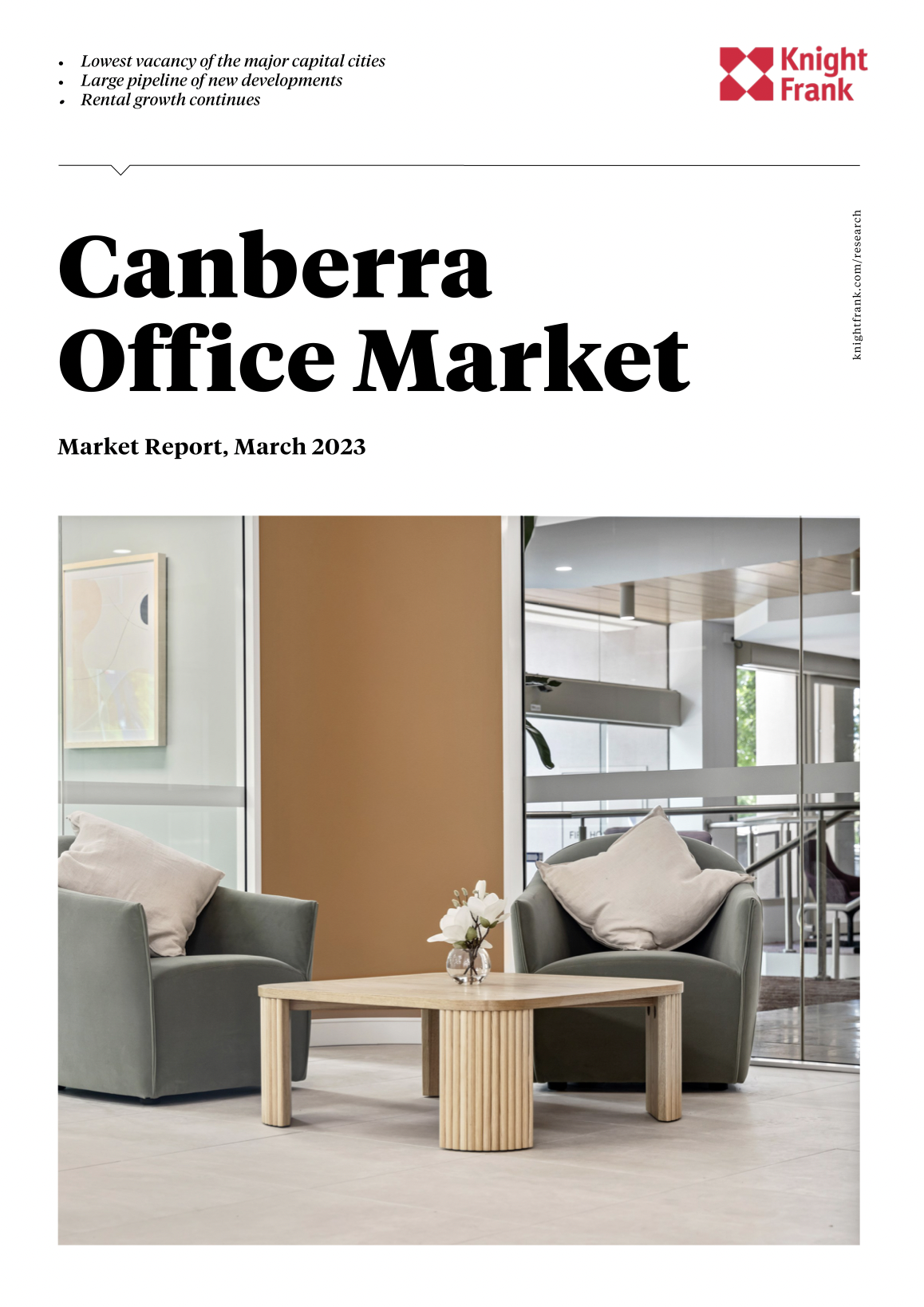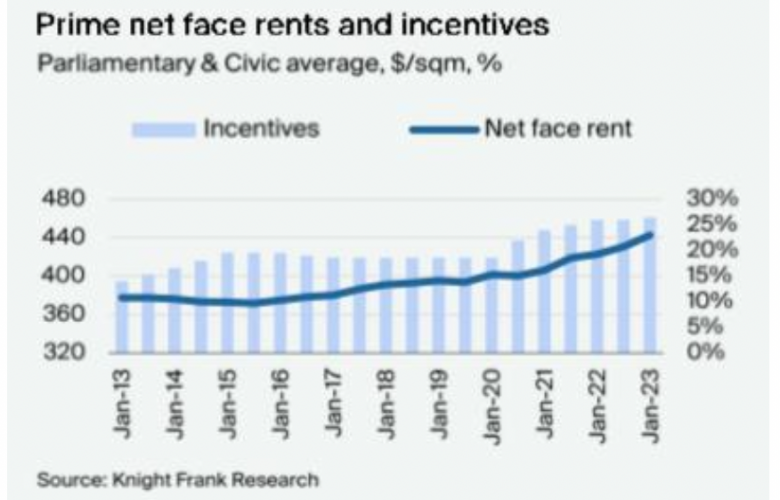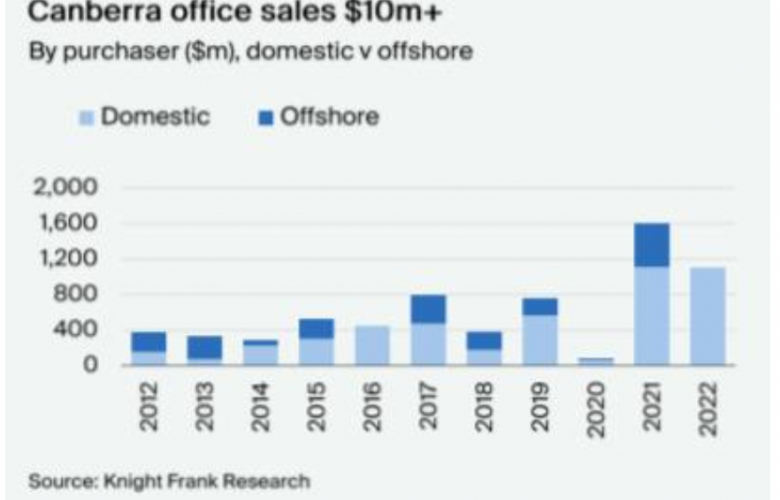New supply in Canberra sees vacancy rise slightly, but demand remains strong, according to Knight Frank research
Contact
New supply in Canberra sees vacancy rise slightly, but demand remains strong, according to Knight Frank research
New developments are injecting a fresh wave of supply in Canberra’s office market as demand remains steady, according to the latest research from Knight Frank.
New developments are injecting a fresh wave of supply in Canberra’s office market as demand remains steady, according to the latest research from Knight Frank.
Knight Frank’s Canberra Office Market Report found Canberra’s office vacancy rate edged slightly higher over the past six months from 8.6 per cent to 8.9 per cent as at January 2023 due to new supply.
However, the vacancy rate is still the lowest amongst the eastern seaboard capital cities, and below its 10-year average of 11.6 per cent.
Knight Frank Associate Director Research and Consulting Marco Mascitelli said Canberra’s office market saw the largest annual influx of new supply in a decade, with 113,467sq m added to the market in the 12 months to January 2023.
“With over 95 per cent being prime stock, this has been the catalyst for the slight rise in A-grade vacancy to 7.3 per cent, up from 6.6 per cent over the second half of 2022,” he said.
“The new supply came from one new development, being Civic Quarter Stage with 33,000 square metres, while the other space comprised refurbishments including 26 Brisbane Avenue, 5 Constitution Avenue and 9 Gordon Street.
“Over the next 18 months new developments expected to be delivered include 90 Denison Street, Deakin, 9-11 Molonglo Drive and Morris Property Group’s One City Hill spec development, while QIC’s development, Section 96, is expected to be delivered by late 2026 or early 2027.”
The Knight Frank research found that while prime vacancy rose slightly, secondary vacancy, which, after stagnating around 15 to 17 per cent for some years, has dropped to 11 per cent, its lowest level since 2012.
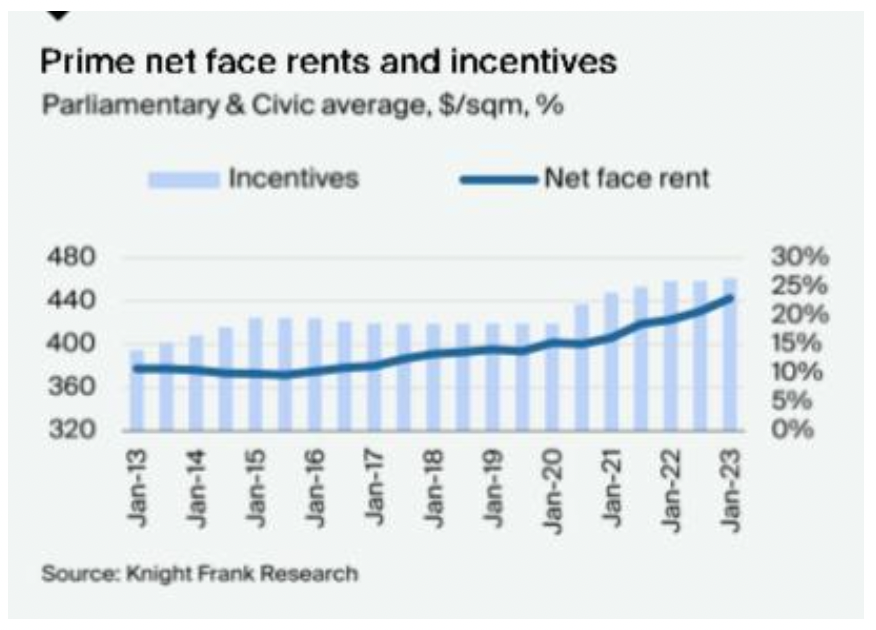
Knight Frank Partner, Office Leasing Nicola Cooper said while the competitive tension in A-grade stock had been due to the sustained high level of demand from government tenants, demand was also coming from the private sector.
“The uptick in private sector demand for space in the sub-500 square metre market has also gained some momentum and is contributing to the reduction in secondary vacancy,” she said.
“Rental growth in Canberra continues with Civic and Parliamentary precinct A-grade net face rents having increased by 4.7 per cent year on year to measure $443 per square metre net.
“Secondary rents have increased by 2.7 per cent to measure $353 per square metre net.
“Civic and Parliamentary precinct average prime incentives remain at all-time highs measuring 26 per cent, having remained steady since the beginning of the year.
“This has resulted in net effective rental growth of 3.6 per cent over the year to measure $299 per square metre.
“With a steady pipeline of new development stock there is scope for incentives to rise slightly further as landlords look to attract new tenants and seek pre-commitments.”
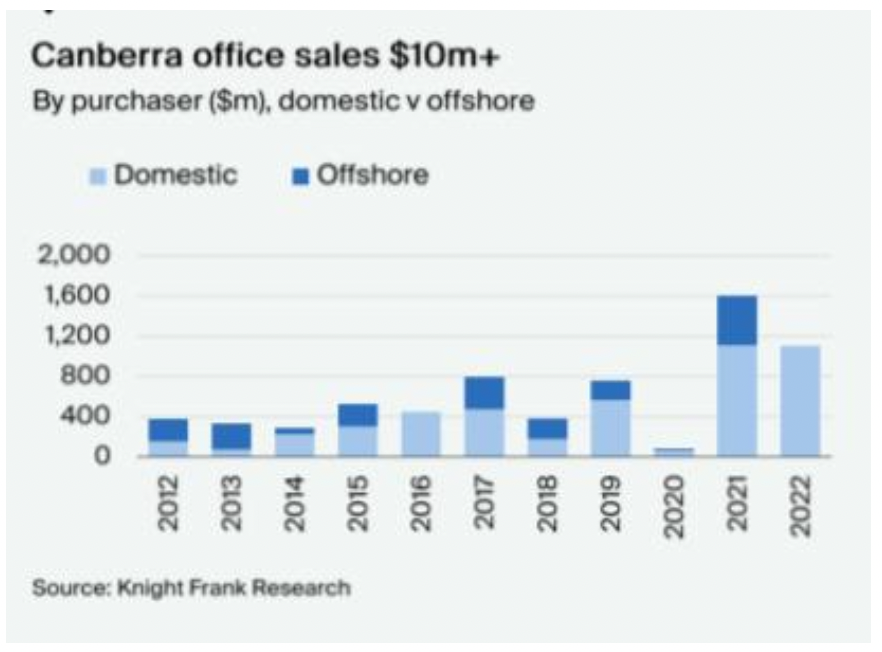
The Knight Frank research found investors were active in Canberra’s office market over 2022 with $1.1 billion in transactions across eight assets, following record high transaction activity in 2021 of $1.6 billion and remaining above the long run average.
Knight Frank’s Head of Institutional Sales, Australia Ben Schubert said: “Canberra assets are sought after by investors given their typically strong tenant covenants and competitive yield advantage against other Eastern Seaboard capital cities.
“The impact of higher debt costs on pricing is apparent and with inflationary pressures and continued interest rate rises, we have seen yields soften.
“Despite this, the demand for quality Canberra office investments remains, supported by the recent sale by Real IS of 21 Genge Street, Civic to Charter Hall for $290 million.”
Click here to view and download the report.
